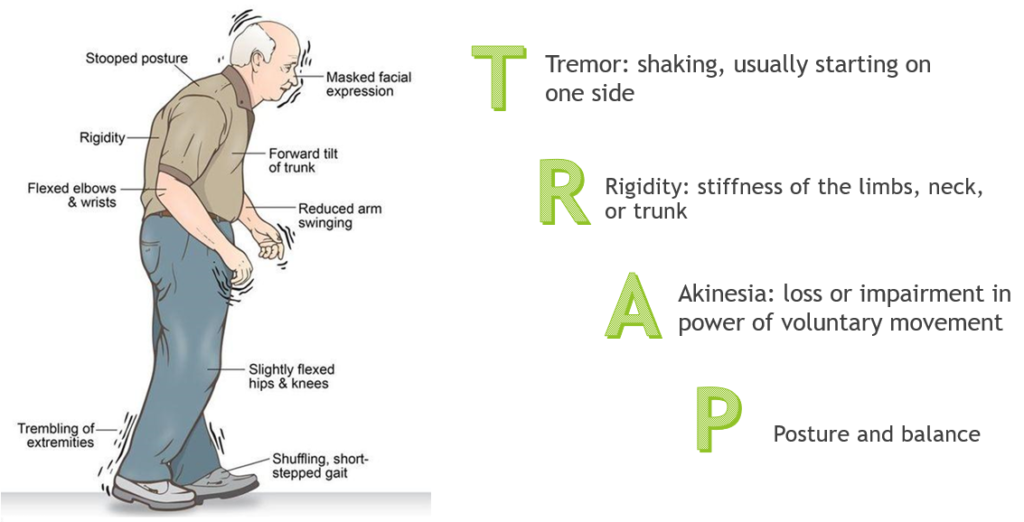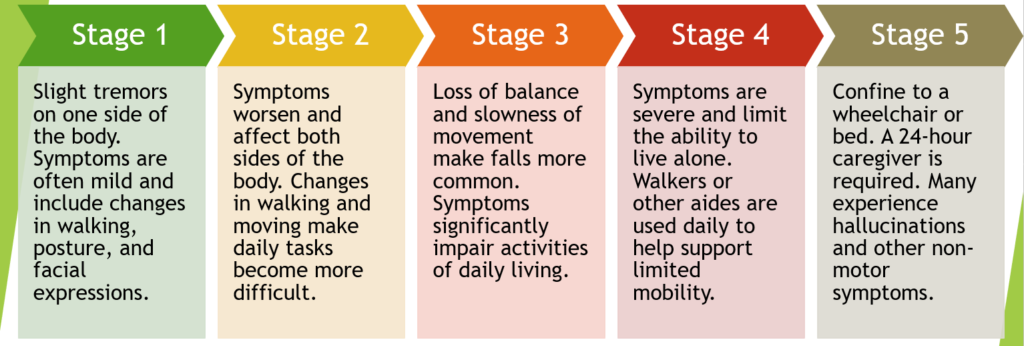What is Parkinson’s Disease
What is Parkinson’s Disease
Parkinson’s disease is a neurological syndrome that progresses over time. Since it is a movement disorder, it impacts a person’s ability to participate in routine tasks such as writing, walking and other activities of daily living. Symptoms vary from person to person but often include rigid muscles, slowness of movement, loss of balance, tremors and soft speech.
More than 1.5 million people have been diagnosed with the disease. Though people with Parkinson’s disease are typically older, one in every 10 people diagnosed is under the age of 40. Those individuals who are diagnosed earlier in life may experience the disease somewhat differently (for instance, more abnormal posturing or cramping of the muscles, a lower rate of dementia, and earlier onset of abnormal movements (dyskinesia) related to the use of medication).
The experience of living with Parkinson’s disease is different for each person affected, and while medications can help suppress symptoms, none have been shown to slow or stop the disease from progressing. However, remaining active through exercise can greatly increase a person’s ability to maintain independence and participate in the things they enjoy.
Common Symptoms of Parkinson’s Disease

Motor Symptoms
Tremor
Bradykinesia
Rigidity and freezing in place
Stooped, shuffling gait
Decreased arm swing
Difficulty arising from a chair
Micrographia
Lack of facial expression
Slowed daily activities
Difficulty turning in bed
Nonmotor Symptoms
Diminished sense of smell
Low voice volume
Painful foot cramps
Sleep disturbance
Depression
Constipation
Drooling
Increased sweating
Urinary frequency/urgency
Hallucinations
Low blood pressure/dizziness
Stages of Parkinson’s Disease

Stage 1: During the earliest stage, the symptoms are often mild and tend to go unnoticed. Slight tremors or other movement symptoms may occur one one side of the body.
Stage 2: Tremors or other movement symptoms become stronger and affect both sides of the body. Changes in how a person walks or moves is recognizably different as daily tasks become more difficult.
Stage 3: As the disease continues to progress, balance becomes more challenging and movements become even more slowed. The person may still live independently but functions like eating or dressing themselves become more burdensome.
Stage 4: Often times, this becomes the transitional period where the person is no longer able to live alone. Walkers or other aides are used daily to help support a person’s limited mobility.
Stage 5: Patients are confined to a wheelchair or bed, and require a caregiver’s presence around the clock.
Click below to explore:
Nebraska Parkinson’s Registry
Webinars